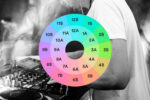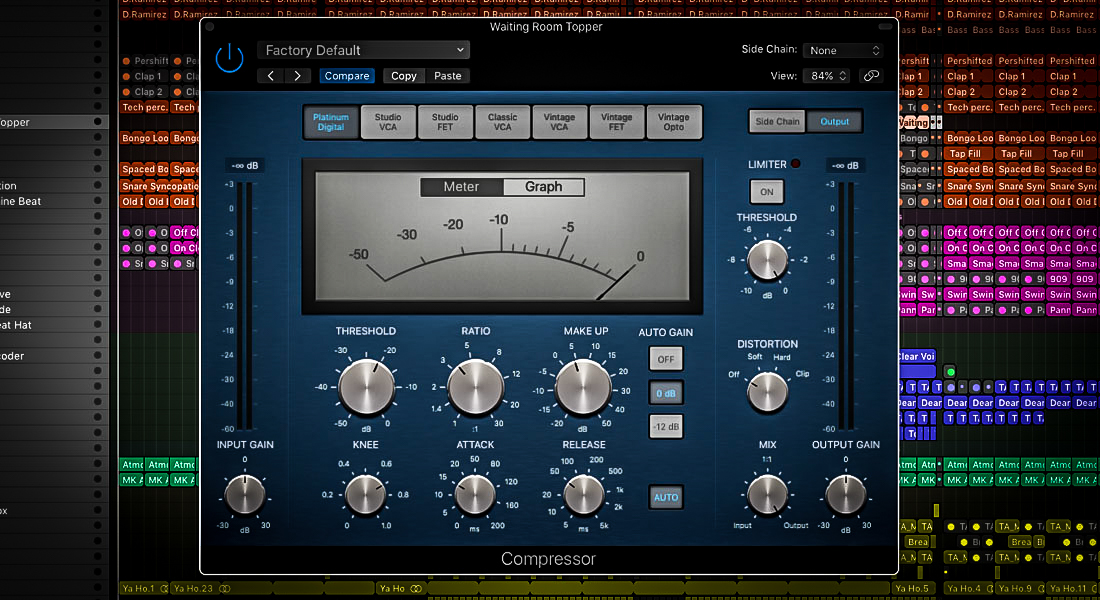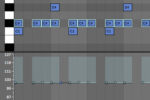Minor Circle of Fifths: Unlocking All Twelve Minor Keys

We dive into the minor circle of fifths, exposing the secrets behind effortless note selection and chord construction to make you a better musician
Ever wondered how musicians and producers effortlessly hit all the right notes or seamlessly play chords that just click? Understanding the key your song calls home is your musical compass and helps you navigate building harmony and adding melodies to your track.
Think of it like a painter, readying their color palette with shades that complement and work with each other. Knowing the notes that belong to your song’s key and grasping how the key is constructed will elevate your productions and collaborations to a whole new level.
By following the steps in this article, you’ll be able to confidently head in creative directions while knowing the musical notes will always work.
Crunching Numbers and Vibrating Strings
Way back in 600 BC Ancient Greece, Pythagoras discovered that vibrating a string half the length of another would produce a pitch exactly an octave higher. Soon after, Pythagoras realized he could divide an octave into twelve distinct pitches and discovered a pattern that repeated all 12 pitches by continuously stacking notes at intervals of seven semitones, known as a fifth.
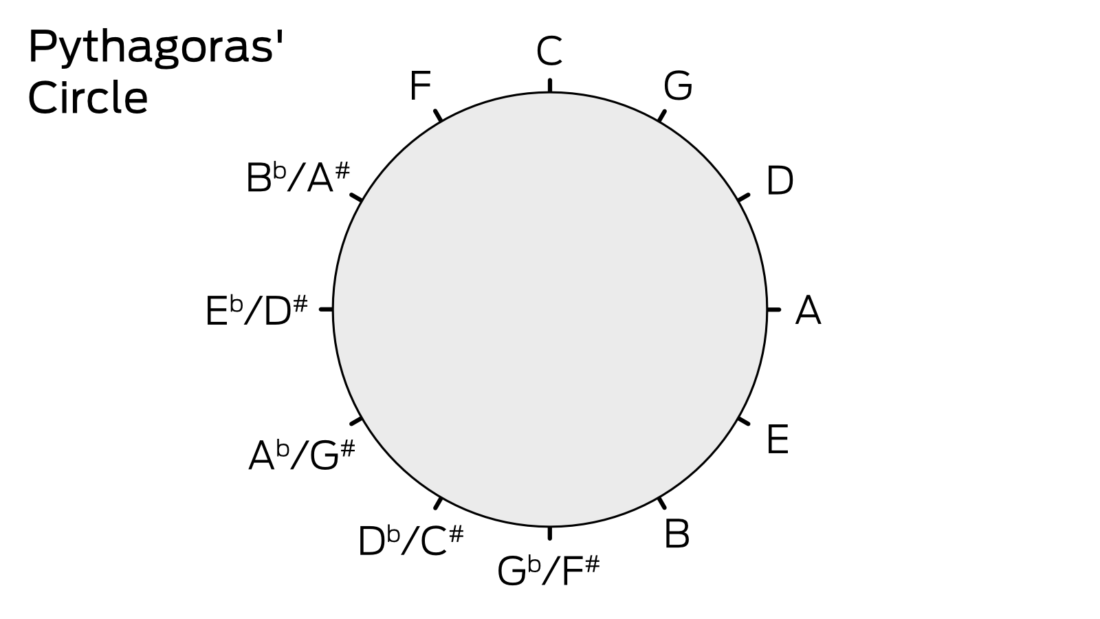
Fast forward to the late 17th and 18th centuries, western minds updated Pythagoras’ circle of fifths. Using it to dissect modulations in baroque music, offering valuable insights to composers and songwriters to this day.
Instead of drowning in a sea of accidentals by notating every note with precise sharps or flats, composers began adjusting the key signature at the beginning of a bar, signaling performers to play only the specified notes.
Constructing the Circle
Understanding the construction of the circle of fifths is essential. Instead of going all alphabetical on us, the circle moves in fifths (clockwise) and in fourths (anticlockwise).
Imagine you’re staring at a musical clock, and right at 12 o’clock, you’ve got the C major scale, a common home ground in music and simple scale with no sharps or flats. To construct the C major scale we ascend alphabetically from C to B — Voilà!
Take this concept and apply it to every point on the circle and you’ve got a major scale for each note plotted around the circle. For every step clockwise, you add a sharp to the key signature; anticlockwise, you add a flat. Sharps and flats are always introduced in a specific order – sharps in the order of F, C, G, D, A, E, B, and flats the other way around.
A sharp and a flat can denote the same note, for example a D# and an Eb. It’s like having two nicknames for a friend. So, sometimes, instead of using a sharp, you might opt for its flat counterpart. In this case, it keeps key signatures from having more than six accidental symbols as the keys become progressively sharper or flatter!
Quick Tip: To remember, use a mnemonic: F C G D A E B reversed gives you the order of flats!
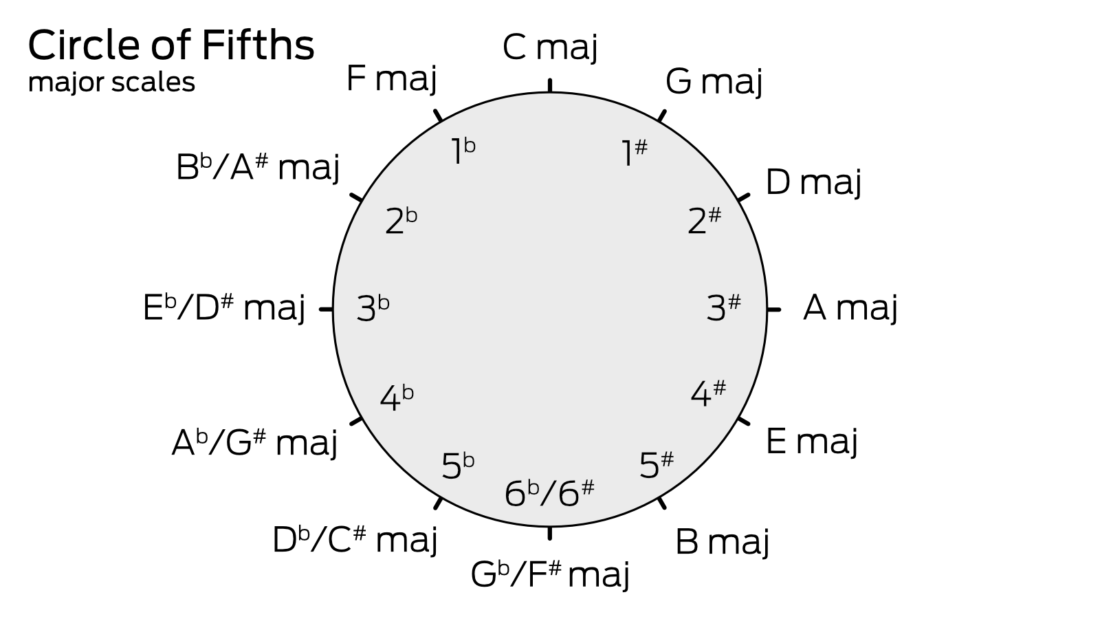
It’s Just a Minor Thing!
We’ve tackled major scales so far but how do you pull minor harmonic information from the circle? Well, it’s easy. Just shift each location’s root note on the circle down by a minor third, equivalent to three semitones. You’ve uncovered its relative minor scale and the circle and its harmonic content remain intact.
For instance, nudge the root note of C major down three semitone and it turns into A minor, A major becomes F# minor, and Eb major is now C minor.
Even though these scales contain the same notes, they have different starting points, which means they have different note intervals. That’s what makes them sound unique. While these scales share the same notes, their distinct starting points result in unique note intervals, lending to their individual sound.
Want to really grasp the difference? Play a C major scale while continuously droning a C note, and then play those same notes with an A note droning. You’ll experience the transformation from a major tonality to a minor vibe right before your ears!
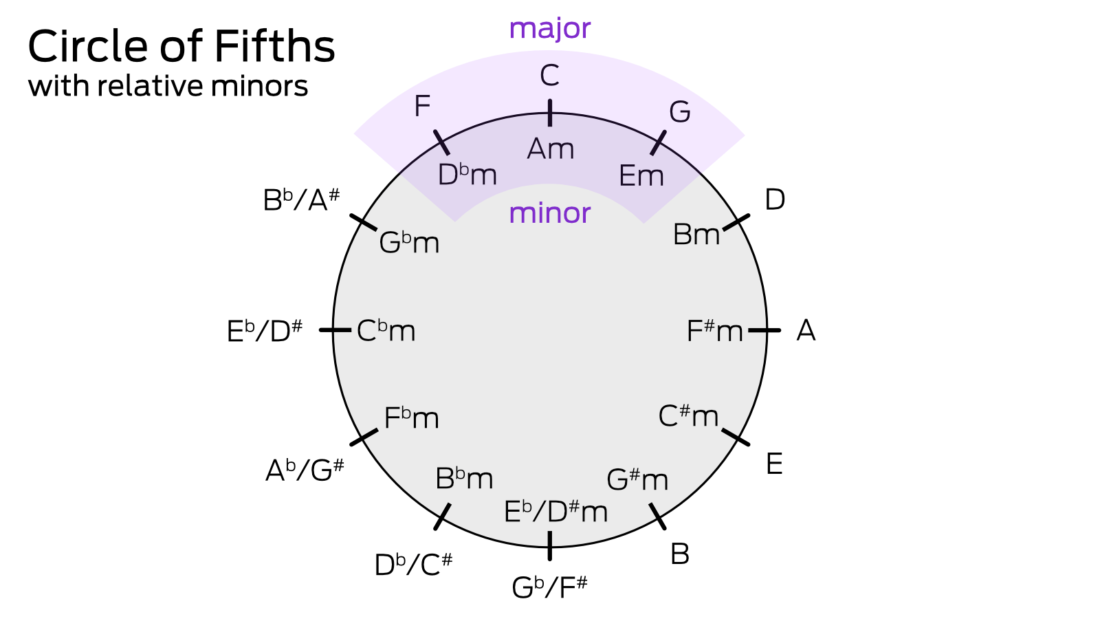
You often see the relative minor cycle mapped on the inside of the circle of fifths
Key Signature Jedi Master
Memorizing the circle of fifths gives you instant access to any key’s twelve-note combination. It’s like having a photographic memory for musical keys that will boost your confidence and banish note fumbling.
Furthermore, have you ever wrestled with transposing ideas or shifting tonal centers? Applying your knowledge of the circle of fifths will guide through uncharted tonal territories, illuminating available notes when raising or lowering a song’s key.
Within the circle, you can discover six of the seven harmonized chords in a scale. Right on either side of the root note and home major scale, you’ll find the notes that indicate the VI and V chords of the key. By applying what we’ve discussed in this article, you can swiftly reveal the relative minors of these three diatonic chords. These six chords unlock a key center’s palette of harmonic possibilities, whether you’re crafting chord progressions, writing melodies, or layering harmonies. It’s your shortcut to creating compositions that harmonically blend together!
Let’s Get Practical
Got some half-baked musical ideas gathering dust? Don’t let them get forgotten about! Instead, harness the art of transposition. Take those musical ideas and transport them to a fresh musical canvas. You’ll be amazed at how they can come alive with a renewed energy and vigor.
Now, let’s talk samples and re-sampling. We all know the transformative power of the right sample, but we’ve also faced the frustration when they just won’t fit right, be it a vocal or an instrument. But here’s the deal – to make the most of your samples, you need to speak their language and understand how they move from one key to another when re-pitching.
Want to quickly unveil the chords that’ll work within your project’s key? Start by identifying your project’s tonal center – the ‘home’ note that everything pulls back to, then try and suss out the tonality be it major (happy) or minor (sad). Now, armed with your musical cheat code, ahem… I mean the circle of fifths, simply glance at the major and relative minor chords flanking the root note. You’ll unveil the six chords and the notes that work within the song’s key!
What’s next?
This is just a small window into the world of music theory, and how to apply it to your process to create better compositions. For a deeper dive on the vast subject delivered in a practical way, check out Bill Gordon’s expansive course. Bill taught at SAE Institute media school in Miami for nine years and wrote their music and music business courses. He presents song, performance, and music business workshops at a wide variety of schools in the U.S. and Europe, and has published the DIY textbook It’s Music, Not Theory, Damn It! along with its companion online ear training course.



